ZeroTrash® Revolution Blog Blog
Explore articles on recycling, waste management and sustainable habits by category
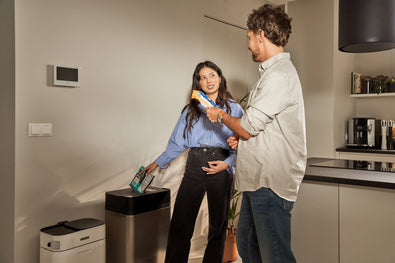
Clear Drop: how we’re revolutionizing home waste management
Read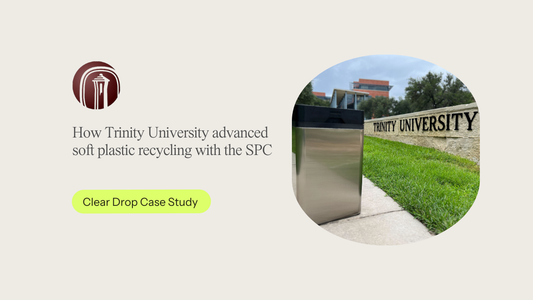
How Trinity University advanced soft plastic re...
Trinity University, a nationally ranked liberal arts institution in San Antonio, Texas, enrolls approximately 2,600 students and maintains a student-to-faculty ratio of roughly 8:1. The university is known for its...
Case studySoft plasticWaste managementСorporate sustainability
How Trinity University advanced soft plastic recycling with the SPC
Trinity University, a nationally ranked liberal arts institution in San Antonio, Texas, enrolls approximately 2,600 students and maintains a student-to-faculty ratio of roughly 8:1. The university is known for its academic rigor, outstanding alumni outcomes, and beautiful, architecturally significant campus. Trinity consistently ranks among the top liberal arts colleges in the country and holds the distinction of being the number one liberal arts university in Texas. Within the Dorothy A. and James W. Laurie Auditorium complex lies the Richardson Communications Center, home to the university’s Department of Communication and KRTU-FM (Jazz 91.7). KRTU is a premier jazz and alternative radio station serving the greater Southwest. It is a campus and community hub where media production, learning, and cultural programming intersect. Laurie Auditorium itself is a 2,700-seat venue that hosts a wide range of events, from academic lectures and commencement ceremonies to public performances, community discussions, and special guest visits. Its high visibility and diverse audience made it an ideal site to explore a new sustainability initiative. Project goals The project sought to embed the SPC (Soft Plastic Compactor) in a dynamic, cross-functional environment. This setting includes: Faculty, who frequent the break room daily Students, particularly those studying communication and media KRTU radio staff, DJs, and student volunteers Guest speakers, special visitors, and artists who appear in academic or media contexts Public guests attending events in Laurie Auditorium The goal was to explore how the SPC performs when used by multiple overlapping groups. This provided an opportunity to test not just the hardware, but also the cultural framing and communications strategy behind it. Soft Plastic Compactor solution An SPC unit was installed in the shared break room within the Communication Department. This space serves as a natural meeting point between academic and media communities, hosting a rotating group of students, professors, radio hosts, station staff, and guests. Clear and approachable signage on the device explained what the SPC is, why it matters, and how to participate. This messaging aligned with the department’s communication values and allowed people to engage with the unit as part of their normal routine. Whether grabbing coffee before class, prepping for a live radio broadcast, or discussing ideas after a lecture, the SPC became a visible part of daily life in the space. "We installed the SPC in our Communication/KRTU break room over the summer, where people actually live their day. Seeing wrappers and film get compacted in seconds is cathartic and it quietly normalizes sustainable behavior" - Dr. Althea Delwiche, Professor & Dept Chair, Department of Communication at Trinity University. SPC use case Primary use area: Shared break room in the Communication Department, located inside the Laurie Auditorium complex. Key user groups: Communication faculty and staff Students and student workers KRTU DJs, station employees, and volunteers Guest speakers and program participants VIPs visiting Laurie Auditorium for cultural or academic events Common soft plastic inputs: Packaging from media and tech equipment Snack wrappers and food-related plastics Film wrap and mailers used in station operations Plastics from hospitality and visitor-related services This variety revealed the types of soft plastic generated in an interdisciplinary learning and production environment, while also demonstrating how accessible the SPC is across user types. Findings and new collaboration perspectives This pilot at Trinity University’s Department of Communication shows how thoughtful placement of the SPC can drive awareness and adoption in spaces where education, media, and public engagement all converge. We are honored to collaborate with such a respected institution and excited for what’s to come. We look forward to expanding our presence within Trinity and across additional departments on campus. Beyond this partnership, we are eager to bring the SPC to other distinguished colleges and universities that share a commitment to sustainability, innovation, and community impact. If your institution is ready to lead by example, we would love to hear from you.
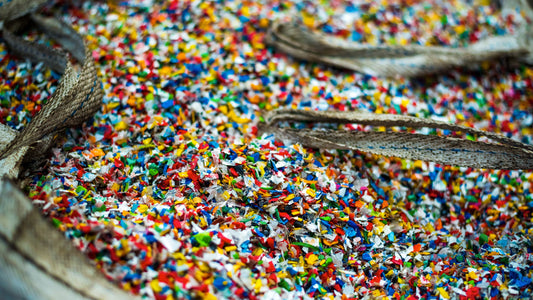
From soft plastic to microplastic: what to know
Soft plastic packaging, like plastic bags, wraps, packaging films, surrounds us inevitably in everyday life. We see them everywhere: wrapping our food, being delivered with every order, lining our trash...
Soft plasticWaste management
From soft plastic to microplastic: what to know
Soft plastic packaging, like plastic bags, wraps, packaging films, surrounds us inevitably in everyday life. We see them everywhere: wrapping our food, being delivered with every order, lining our trash bins. But what we don’t see is where they go after. Our interaction with flexible plastics doesn’t end after we throw them away and don't see them anymore. Unlike bottles or cans, soft plastics rarely get recycled. Instead, soft plastic fragments into invisible particles more easily than hard types of plastic: microplastics (under 5mm) and nanoplastics (under 1 μm). These particles are now everywhere, including inside our bodies. The problem is more than just litter – it’s an invisibility. How soft plastics turn into microplastics Soft plastics can break down due to a combination of UV radiation, abrasion, and weathering. These processes cause the polymer chains in plastics to degrade. UV Radiation Sunlight, particularly ultraviolet (UV) radiation, “can break down the chemical bonds within the plastic”, causing it to become brittle and crack. This process, known as photodegradation, can discolor the plastic and reduce its mechanical strength. What is more interesting is that scientists from the UK and the University of Cape Town in South Africa used complementary studies to show that “plastics of the same composition degrade at different rates depending on the colour”. The findings demonstrate that the black, white, and silver colourants protect the plastic from damaging ultraviolet (UV) radiation, whereas other types of plastic with other pigments do not. Abrasion Physical processes like wave action, wind, walking on plastic packaging and contact with rough surfaces “can cause plastic to wear down and break into smaller pieces”. This is particularly evident in marine environments where plastic debris is constantly subjected to wave action and abrasion from sand and rocks. Weathering This encompasses the combined effects of UV radiation, temperature fluctuations, and other environmental factors. Weathering can accelerate the degradation process, making plastics more susceptible to breaking down into smaller fragments. Why is this knowledge important The impact of these small particles is more drastic than could be imagined. Toxic effects on the environment are investigated in soil, marine systems, and air. Air pollution Nearly a dozen studies have shown airborne microplastic concentrations around the world, which means that we basically breathe microplastics every single day. The cities showing higher levels should be genuinely more polluted. Wind is the main transportation agent for small-sized plastic particles in urban areas. “Airborne microplastics” contain different colors (black and white), and the shapes are different, such as fiber (the most prevalent), film, fragment, foam, granule, and sphere. Additionally, soft plastic particles “are being researched to be potent cloudmakers, influencing climate change”. Marine system pollution Microplastics can enter the ocean from various sources, such as wastewater discharge, fishing, weathering or fragmentation. Once in the ocean, microplastics can be transported by currents and winds, accumulate in certain regions. “Microplastics can also act as vectors for other pollutants”, such as metals, organic contaminants, and pathogens, by adsorbing them from the surrounding water or releasing them from their own composition. These pollutants can then be transferred to marine organisms that ingest microplastics, causing various adverse effects, such as inflammation, oxidative stress, endocrine disruption, and reduced growth and reproduction. Soil pollution Agricultural soils now hold around “23 times more microplastics than oceans”. Other results of the research show that plastics in soil may be exposed to up to 10,000 chemical additives, most of which are unregulated in agriculture. Therefore, plastic in soil can be a source of toxic or harmful substances that affect soil health, plants, microbiota, and, eventually, human health - and this is a blind spot in the legislation. Health risks backed by research The scale of environmental pollution caused by plastic waste means that microplastics, or tiny plastic particles, are everywhere. Cite ”the latest findings showing microplastics found in human tissues”: blood, brain, lungs, placenta, etc., and linked to inflammation, immune response, oxidative stress, and even cardiovascular issues. First, the digestive systems are affected when microplastics are ingested, and physical irritation to the gastrointestinal tract may eventually cause inflammation, “resulting in various gastrointestinal symptoms”. Microplastics may cause changes in the intestinal microbiome, resulting in an imbalance between beneficial and harmful bacteria, which can lead to various gastrointestinal symptoms, such as abdominal pain, bloating, and changes in bowel habits. Microplastics were recently found in human testicles, with scientists suggesting a possible link to declining sperm counts in men. Dr. Shanna Swan, Ph.D., a prominent American environmental and reproductive epidemiologist, shares that chemicals like phthalates, BPA/BPS, and PFAS are commonly found in soft plastics and consumer products (shower curtains, plastic packaging like food containers, personal care items). They are “linked to hormone disruption, reduced sperm count, and impaired fetal development”. Many endocrine-disrupting chemicals are untested and not regulated, yet can mimic or block hormones, leading to health effects like miscarriage, altered sexual development, and lowered fertility across generations. What can you do to lessen the amount of microplastics created from flexible plastics You can’t eliminate soft plastic overnight. But you can decrease the volume of microplastics broken down from the plastic packaging and other soft plastics you use. Collect soft plastics separately Don't toss soft plastic packaging in the general trash with other types of plastic. Once mixed and compacted with other waste, they’re likely headed for landfills or incineration, and eventual microplastic pollution. Educate your circle Share facts, not fear. The more people understand the issue, the more likely they are to act. For instance, host a bin fro soft plastic packaging at your workplace. Avoid soft plastic when you can Refill, reuse, or choose rigid or paper packaging instead - they’re more likely to be recycled and less likely to become microplastics. Don’t burn or shred it Soft plastic doesn’t biodegrade: burning releases toxins, and shredding only creates smaller, more dangerous particles. Use a compaction system (like Soft Plastic Compactor) Compacting soft plastics reduces surface area exposure and helps prevent them from fragmenting into microplastics before proper disposal. Clear Drop also provides a whole cycle recycling system with proper soft plastic recycling, with a network of recycling facilities, after a pre-recycling stage. As awareness grows, so does responsibility and the ability to act. Whether you're a researcher, a parent, a business owner, or just someone trying to make better choices, the message is clear: the journey from soft plastics to microplastics begins with everyday moments. And in those moments, we still have the power to choose prevention over invisibility.
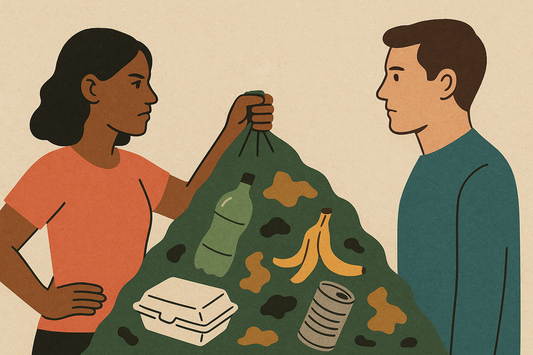
Survey reveals trash sparks more fights than ch...
There are two kinds of people in the world: the ones who bring the garbage to the curb, and the ones who rinse out the peanut butter jar before it...
Organic wasteSoft plasticWaste management
Survey reveals trash sparks more fights than childcare, and why recycling Is at the heart of It
There are two kinds of people in the world: the ones who bring the garbage to the curb, and the ones who rinse out the peanut butter jar before it goes to recycling. Oftentimes, they live together. According to a Clear Drop survey of 800 adults living with partners, soft plastic recycling and waste management have become unexpected sources of household tension, with trash duties causing more arguments than childcare decisions. To understand how this division plays out at home, we surveyed adults to map out the mechanisms behind household waste management: who does what, who gets thanked for it (or doesn't), and what that says about gender, guilt, and modern domestic life. Trash duties spark more fights than childcare — 1 in 2 couples admit to arguing about trash, survey finds While big parenting decisions or figuring out what's for dinner can stir up conflict, the real flashpoint in modern relationships might be taking out the trash. According to a Clear Drop survey, 52% of couples have argued about trash duties — more than about childcare. While 30% of respondents said they don't argue about chores at all, the rest named garbage as one of the top 4 conflict triggers, right after cleaning, cooking, and laundry. Why waste management gets no recognition One reason for such contention? Trash and recycling are 6x less appreciated than cooking. We celebrate a home-cooked meal, but barely notice where the scraps go. We unwrap gifts with joy, then immediately forget about the packaging. Dealing with our trash is the final act of everything we consume, yet 72% of Americans say waste management doesn't feel like a valued task. Gender roles in waste and recycling tasks According to the survey, 52% of respondents said the man usually takes out the trash — a rather visible chore. But behind that single action are numerous tedious tasks. At-home recycling involves sorting, rinsing, decoding triangle symbols, deciphering which plastics are accepted, which takeout containers are not, and whether a lid needs to come off a bottle. Key findings on household waste division: 52% of men typically handle trash removal 54% of women handle recycling sorting and preparation Women perform 1.5x more invisible waste management tasks In this way, recycling has become a mirror of domestic inequality: the visible gestures skew masculine, while the invisible tasks are seen as more feminine. Why women feel more recycling guilt than men The emotional weight of sustainability isn't shared equally, either. When asked if they'd ever felt guilty for throwing plastic in the trash without sorting it, 63% of respondents said yes. But the guilt also skewed sharply by gender: women are 1.5 times more likely than men to feel guilty about not recycling properly. This emotional burden is particularly heavy when it comes to soft plastic recycling, where clear disposal options are often unavailable through traditional curbside programs. Most people don't trust the recycling system Even for those who do the sorting, they don't have much faith in the system. Over half of Americans (58%) say they're not confident their recycling actually gets recycled. Women are even more skeptical: 62% of women doubt their recycling efforts make it through the system 54% of men share similar doubts It's a telling contradiction: The people doing more of the emotional and invisible labor are also the ones least convinced it matters. Their doubt has merit — in the U.S., only about 5% of plastic is successfully recycled. Why soft plastics are a hidden source of household stress When asked which type of waste feels hardest to manage at home, hazardous items like batteries and electronics topped the list, accounting for nearly 25% of all answers. Food waste came close behind at 24% — both categories stood out as the most frequently mentioned trouble spots across households. Glass ranked third, with 17% of all answers. It's technically recyclable, but many cities have specific rules. People often wonder if they need to remove labels or if broken glass can be recycled or not. For 13% of respondents, soft plastics (including wrappers, bags, mailers, and film packaging) were most difficult to manage. Since most of these materials aren’t accepted by curbside programs or specialty drop-offs, they often end up in the trash. With no clear path for disposal, soft plastics have become one of the biggest blind spots in household waste. Paper and cardboard accounted for nearly 12% of answers, while cans and metal made up about 9.5%. In short, no category felt entirely frictionless, but hazardous and organic waste were flagged most often. Less arguing, more efficient recycling We live in homes that produce waste daily, yet most of us don’t know how to properly handle it, don’t believe our systems work, and don’t fully recognize the people who do the work anyway. While sustainability often feels like a personal responsibility, it’s also deeply social. It’s often shaped by how couples talk (or don’t talk) about fairness, trust, and what counts as “real work.” Talking openly about waste — who handles it, who gets thanked, and what happens after it leaves our hands — is a first step toward shifting both habits and norms. It also means being honest about the gaps in the system: how confusing rules, broken infrastructure, and low transparency erode trust. Clearer guidance, better tools, and public solutions that match the effort people already put into recycling are the missing pieces. That’s where Clear Drop comes in. At Clear Drop, we’re building solutions that don’t just offload responsibility but offer real solutions to the existing recycling issues. Soft Plastic Compactor (SPC) finally gives you a real way to recycle tricky-to-recycle soft plastic packaging: it turns soft plastics into dense blocks, ready to be recycled by our partners. Organics Collector (OC) makes it easy to collect food scraps at home, cleanly and mess-free, also preparing them for composting. You get the right tools for closing the waste loop and peace of mind.
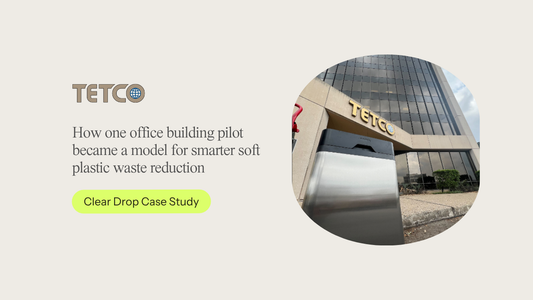
How one office building pilot became a model fo...
In the heart of a major U.S. city, San Antonio, a 10-story commercial office building with up to 30 tenant companies took a step toward smarter sustainability. The building's management...
Case studyWaste managementСorporate sustainability
How one office building pilot became a model for smarter soft plastic waste reduction
In the heart of a major U.S. city, San Antonio, a 10-story commercial office building with up to 30 tenant companies took a step toward smarter sustainability. The building's management sought an effective, hands-on solution to deal with soft plastic waste generated by significant traffic, regular deliveries, and daily office activity. Until recently, the entire building's soft plastic went straight into general waste bins and, inevitably, landfills. Recognizing this recycling gap, the building’s management team agreed to test a new sustainable approach by piloting the Soft Plastic Compactor (SPC) from Clear Drop, a first-of-its-kind device designed specifically to deal with flexible plastics at the point of disposal. The goal: reducing waste and changing behavior Unlike other recycling efforts, soft plastics — such as mailers, wrappers, and packaging — are often overlooked. They’re light, shapeless, and notoriously hard to recycle. Most commercial buildings lack the infrastructure to separate or reallocate these materials. This pilot focused not only on waste reduction but also on behavioral change. The office team wanted to explore how a shared, high-traffic environment would respond to a new type of sustainability intervention. “It’s great to finally see a solution targeting the soft plastic waste we all know ends up in the trash. It's sparked some good conversations among tenants already.” — Tenant feedback, Week 1 The plan: installing an SPC The SPC was installed in a central public area frequented by employees and service staff. Clear signage explained what the device was, what types of plastics it accepts, and why it mattered. There were no lengthy training sessions. This pilot marked a major step forward in testing scale and refining the messaging around the product experience. Initial reactions and feedback Within days, the building began to see early signs of success. Staff and tenants were engaging organically with the machine and showed an increased curiosity about soft plastic use and recycling. Some initial user feedback helped identify opportunities for improvement, such as screen readability and ergonomics, which will inform hardware and signage updates for future pilots. “We didn’t know what to expect, but people started asking about the machine almost immediately. It feels like something new is possible here.” — Building staff comment SPC's immediate impact The building’s management and Clear Drop treated this experience as more than just a test: It was a learning lab. The team monitored how tenants used the SPC, where signage was most effective, and what kinds of plastics were being collected. From the first day, the team witnessed many people inserting a variety of soft plastic materials into the SPC, including: Food wrappers and grocery bags Shipping mailers from business operations Bubble wrap and soft packaging film With the SPC placed in such a central location, the team was able to evaluate not just usage, but also accountability dynamics — such as who is responsible for emptying the unit and what kind of infrastructure is needed to support that. Results: SPC minimized plastic waste and spotlighted sustainability innovation The pilot proved that small actions in shared spaces can create momentum in creating an effective waste management system. The office building’s use of the SPC reduced the volume of soft plastic waste and increase its recyclability. It also raised awareness, invited participation, and planted the seed for broader adoption. Management now sees the SPC as a valuable amenity — a simple yet powerful way to show tenants they care about environmental impact, innovation, and accountability. And most importantly, it’s a system that works, even in places not designed for sorting plastics. This multi-tenant office pilot is setting the template for wider-scale SPC rollouts. It’s the first deployment where product-market fit, setting, and communication all aligned for a full learning loop. We are still analyzing more long-term results , but the initial response from tenants and staff shows promise. The building's team sees the SPC not only as a sustainability tool but as a way to boost tenant engagement and reduce overall plastic waste.
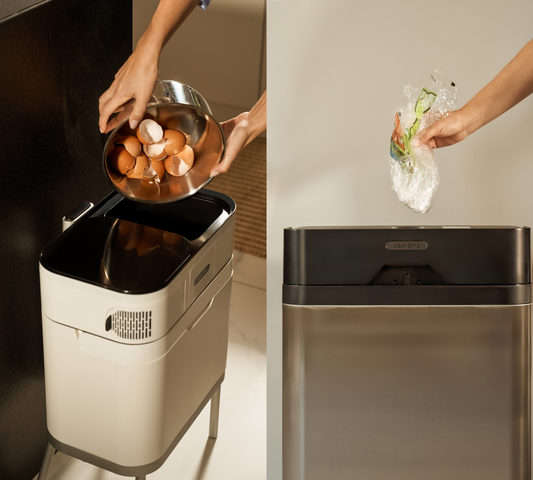
Fixing the broken recycling system: why Clear D...
“Why did Clear Drop come to life? Because the way we deal with waste is broken, and the future deserves better,” - Ivan Arbouzov, founder and CEO of Clear Drop. From the Soft...
Organic wasteSoft plasticWaste management
Fixing the broken recycling system: why Clear Drop® exists
“Why did Clear Drop come to life? Because the way we deal with waste is broken, and the future deserves better,” - Ivan Arbouzov, founder and CEO of Clear Drop. From the Soft Plastic Compactor and Organics Collector to new inventions in development, Clear Drop’s mission is simple: to fill the gap between home waste collection and the recycling industry. Clear Drop aims to create a practical and truly impactful pre-recycling system, one that ensures materials are properly prepared for final recycling and 100% recycled with our partners. We created Clear Drop to fill the gap between home waste collection and the recycling industry with an ultimate ZeroTrash goal. We believe that real environmental change starts not with complicated recycling systems, but with smart, seamless solutions. Pre-recycling concept That’s why we’re pioneering the future of pre-recycling: a simple, effective way to prepare waste for recycling right where it’s created with the help of our home appliances. From tricky soft plastic packaging to everyday organic waste, we’re transforming how homes handle waste, and helping people move closer to a Zero-Trash lifestyle. We address the issues of fluffy, always-flying flexible plastics, which are hardly accepted by recycling facilities as-is, by compacting them and making them easy to collect, transport and recycle. Similarly, we tackle the often-pungent smell and messy organic waste that require constant removal by making them easy to collect and neutralizing odors still saving their compost features. Clear Drop team Founder and CEO Ivan Arbouzov brings 34 years of experience in the hardware industry. Over his career, he has launched several ventures, including a media company, multiple product development businesses, and most notably, a multinational optics and electronics company that became a global leader and an industry standard in its niche. Ivan has been an inventor since childhood, always driven to create innovative solutions. With Clear Drop, he envisions a future where recycling begins at home, enabling households to pre-process waste in a way that benefits the entire system. This vision underpins Clear Drop’s mission to revolutionize soft plastic recycling and organic waste management for a cleaner, greener future. Plastic, especially soft plastic, is almost invisible in how ordinary it is. And yet, it's almost impossible to recycle.We unwrap something and immediately discard what’s left, often into a system that’s not ready to deal with it. ”I wanted to work on something that truly mattered. Something that could help shift how we treat the world around us. That’s why I built one of our products, the Soft Plastic Compactor. Not just as a tool, but as a way to catch the problem at the moment it starts, right when waste is created. I reinvested what I earned from past ventures because I believe it needs to exist. I believe we can do better, not through greenwashing or gimmicks, but with real, practical tools that help people take action at home, right when something becomes waste,“ shares Ivan. That’s what the Soft Plastic Compactor and Organics Collector are for. It’s not just a machine. It’s a small shift in how we deal with what we throw away, and a step toward a better system. How the pre-recycling concept started The active development phase of Clear Drop’s first devices began about five years ago. The company’s product development is based on the experience of multiple specialists: mechanical engineering, electronics, programming, chemical analysis, design, and ergonomics. An initial prototype of the plastic compactor, the flagship product that doesn’t have analogs, was unveiled at CES 2021, where it received highly positive feedback from attendees. Clear Drop’s products are designed to integrate seamlessly into daily life. They are simple, convenient, and habit-forming, preparing waste for being recycled and consuming minimal electricity while complementing industrial recycling systems. We have initiated collaborations with numerous projects, recycling facilities, industry stakeholders, and local authorities to create a more sustainable waste management ecosystem and to take responsibility for closing the loop with waste collected and compacted with our devices. Clear Drop envisions a future where households actively participate in waste pre-processing at the source. Backed by industry leaders To make our recycling systems truly work, we brought in top industry experts. David Nix, with over 30 years in plastics and recycling, helped us build a collection strategy that aligns with real-world recycling processes. His experience spans global producers, sustainability leadership, and launching Green Group Consulting. Robert Render, founder of Lakeside 360 Partners and a longtime leader in circular systems, guided our approach to closed-loop programs and measurable impact. His past work includes advising Ravago, leading national recycling committees, and launching over 200 sustainability programs. Their expertise ensures that Clear Drop isn’t just convenient - it’s built for real-world impact and future scalability. Our long-term goal is simple: to shift how waste is handled at the point of generation in any form, starting with flexible plastics and organic waste. By working with partners across recycling, policy, and technology, we’re laying the foundation for scalable, lasting solutions to one of the world’s most urgent problems.

